The Magic World of the Lacandón Jungle
Roads to Adventure.
text/photos by Capt. Thor Janson.
As soon as I arrived at San Cristóbal de las Casas I got directions to the local airfield in order to locate a legendary Chiapanecan bush pilot by the name of Capt. Martínez.
The place was abandoned, little more than a grassy strip at the end of which were parked several ramshackle old Piper Cubs. As fate would have it one of the owners of a questionable-looking craft zoomed onto the strip in an old Dodge pickup and began pouring fuel into his plane from several jerry cans. “Where’s Capt. Martínez?” I inquired.
“Oh, he’s no longer based here, he’s up in Ocosingo” replied the man staring at me suspiciously. “What do you want with him?” “Well, I am supposed to fly into the Lacandón Jungle with Martínez to meet team of explorers rafting down the Usumacita River.”
“Oh, is that crazy gringo don Lewis back again?” the man said grinning, extending his hand and introducing himself as Capt. Pavia. “Yes, that’s right,” I replied “and Jeff Lewis invited me to fly in with Capt. Martínez to the meet them at the Village of Lacanjá.”
A few minutes later I was talking with Martínez via the Piper’s crackling radio. It seemed as if he had totally forgotten about the rendezvous with the Lewis party. I insisted and told him that Lewis had been emphatic that I should meet them at Lacanjá on Nov. 8. Finally Martínez assented and we resolved to meet the following morning at the airport at 5.
That evening I camped by the side of the strip and after a hearty repast of campfire-roasted chicken and potatoes, washed down by one or two Dos Equis beers, I lazed by the fire marveling at a spectacularly sublime sunset.
At the crack of dawn the next morning I awoke to the sound of an airplane approaching. Seconds later Martínez had landed his old bush plane, the motor belching smoke and stuttering, and we shook hands.
“You can leave your vehicle and things here,” he said. “I called the local army base and they are sending over a few soldiers to keep an eye on things.” As I put my backpack into the rustic craft and strapped myself in I admit that I was having some feelings of trepidation.
The rickety old plane hardly looked as if it could fly, but Capt. Martínez came highly recommended and I bit the bullet, putting my fate in the hands of God … and Martínez. A few minutes later we were flying high above what seemed to be an endless sea of green, heading into the vast Lacandón Jungle. In those days there were few roads in Chiapas.
The jungle was vast and human presence was minimal. During the next hour I saw almost no evidence of human inhabitants except for a few scattered corn plots (milpas) and the occasional plume of smoke wafting up through the forest canopy. Finally Capt. Martínez began circling his Piper, though I could see nothing below but rainforest from horizon to horizon. He was signaling the people below to get off the airstrip as he was about to land.
We continued circling for several minutes and he made his plummeting descent. Finally a narrow, grassy transect in the immensity of the forest became visible. Vroom! We careened into an extremely bumpy landing on the rutted grass strip and were immediately surrounded by a large group of wild-looking, tunic-attired natives. “Don’t worry,” grinned Matinez, “they’re friendly … especially if you give them candy!” As he jumped out of the plane he produced a big bag of mixed bonbons and began distributing them to the gleeful, laughing crowd.
The entire village had come down to meet us. One long-haired man came up to me and extended his hand. He took hold of mine and kept shaking it and didn’t let go for a long time, saying nothing as he stared me straight in the eyes as if to scrutinize my soul. Finally, while still grasping my hand, he spoke: “Yachooch yumcax bec lacandom muxla kalé…”
I looked to Martínez, who was observing our meeting with acute interest. “Chambor K’in says he’s been waiting for you … he says he saw you in a dream.”
[Note: how is it conceivably possible that I could remember the Mayan words used by Chambor all these years later? Because I have discussed this incident with Chambor again in more recent years and he confirmed the incident and told me again what he said, in Mayan and Spanish.]
I was somewhat taken aback by this revelation. But who knows, the Lacandón have a reputation for being powerful shamans and seers. Coming back to realty I inquired about the Lewis party and just got blank stares in return. Seems Lewis had not appeared and Martínez started bitching about getting paid. As we argued about how to proceed two tunic-clad woman approached us and spoke shyly with Martínez.
Both of them had strange, angry looking disc-shaped lesions on their legs (leishmaniasis?). They told us that try as they may, they could not get the wounds to heal. They beseeched Martínez to fly them out to the nearest hospital at Palenque — at that time a seven-day walk from Lacanjá. Since Lewis and party had not showed up I volunteer to stay and wait for them in the village, making room for the women to fly out with Martínez.
I promised Martínez that he would get paid and we resolved to try again in one week, during which time the women might get treated and hopefully Lewis would show up.
Vroom, vroom, vroom! The little bush plane took to the sky and I was left surrounded by the crowd of long-haired, crazy-looking Indians, all looking at me intently. In those days it was very rare that they ever had visitors. The jungle was vast and remote, and full of life. Chambor showed me to an abandoned government clinic by the side of the strip and said that I was welcome to camp there.
“If you like, you can come hunting with me tomorrow morning,” he added. The rest of the day was spent touring the village with a little, wide-eyed, shaggy-maned boy as my guide. I cannot say why but this little Indian, whose name was Chuy, simply adopted me and from then on he was perpetually at my side.
The village of Lacanjá, one of only four Lacandón settlements to survive, was populated by some 200 souls. Of all Mayan tribes the Lacandón were the only ones never to submit to Spanish domination.
The fact that in the entire Mayan world only the Lacandón men still sport long hair attests to this fact.
I awoke at dawn to find Chuy sitting there silently staring at me. In those days few of the inhabitants of Lacanjá spoke Spanish and so communication was by way of sign language and gesticulation.
Chuy took me by the hand and led me to the handsome, thatched-roof dwelling where Chambor K’in lived. He was waiting for us ready to go hunting and handed Chuy a bow and quiver of arrows while he slung a .22 rifle over his shoulder. Chambor did speak some Spanish, as he had lived for a time with the anthropologists Frans and Trudy Blom in San Cristobal. We walked for an hour or so through the most luxuriant jungle I had ever seen and there was water everywhere. We crossed dozens of rivulets and streams. The water was cool and clear and pure.
Chambor silently motioned to Chuy to give him the bow and selected a particular arrow, which he immediately drew across the bow and in a sweeping motion aimed upward and shot. A terrified squawk and screech and a big scarlet macaw fell at our feet. I was horrified. Oh yes, Chambor winked and explained that the parrot was even more delicious than chicken. Well, when in Rome do as the Romans, I thought.
The jungle was vast and the wildlife abundant, including scarlet macaws. He handed me a woven bag and from then on it was my job to carry the increasing number of macaws he had slain. For reasons I did not know, he seemed to be concentrating on scarlet macaws because except for a small brocket deer, this was all he took all day. Along the way we visited several ancient and abandoned ruins of the “grandfathers.” He took me to Bonampak, a three-hour walk from Lacanjá, where I got some nice photos of perhaps the most beautiful classic period murals to survive the holocaust when Spanish inquisitors did their best to erase all evidence of classic Mayan culture.
That evening back at Chambor’s hut the entire family was helping to prepare and conserve the bushmeat. I noticed that they were taking particular care to carefully pluck the beautiful macaw feathers, which they put aside in a basket. The plucked carcasses were hung up high above a fire in the middle of the hut where they were slow-cooked and smoked to preserve them. I was thankful that my dinner plate that evening was ladled only scrambled turkey eggs, black beans and tortillas.
I was fascinated by the traditional Mayan agricultural system still practiced by the Lacandón. Chamber K’in gave me a tour of his property where no less than 50 edible fruits, tubers, vegetables and leaves were being cared for in a mixed horticultural garden like I had never seen before.
At first glance it just looked like wild jungle, but the fact was that the jungle was actually the product of decades of selection and managed planting. When we got back to the hut Chambor’s young wife offered us gourds filled with a drink made from toasted and ground zapote seeds and wild honey, delicious!
On the fourth day of my stay at Lacanjá the Lewis party finally arrived and after perfunctory greetings and sharing a cigar or two with the elders, Lewis got down to what I was to learn was his real business in the jungle. He was trading candy and trinkets for macaw feathers! What in the hell for, I wondered.
I was to learn that Jeff Lewis and his companion had for several years been trading with the Lacandón to obtain these spectacular feathers, which later they traded with the Zuni and Hopi Indians of the U.S. Southwest who in turn payed, not with candy, but with extremely valuable jewelry and kachina dolls. Both Zuni and Hopi, I was informed, had Parrot Clans, and the feathers were needed to adorn ceremonial costumes used for their sacred dances. Well, I was not at all pleased to be a part of this situation. But, as I said earlier, when in Rome …
To spend a week in the virgin Lacandón Jungle was a fantastic and unforgettable experience and I made some good friends in Lacanjá. But the week came to an end when Capt. Martínez returned. The entire village came to the grassy airstrip for the sendoff, chattering and waving as we got into the little plane. Moments later we were in the air and in an hour were back to civilization, an experience about as close to time travel as I could imagine.
Fast forward to 1997. Although I had always dreamed of returning to Lacanjá, as fate would have it, it took me two decades to do so. By then the Mexican government had built roads into the jungle for oil exploration and exploitation of valuable hardwoods. This time I drove into Lacanjá on a damaged, but passable, semi-paved track out of Palenque. It was May and the air was choked with smoke, the effect of the multitude of invading campesinos practicing their traditional but now obsolete slash-and-burn farming.
As I drove into the former virgin jungle I was appalled to see enormous sawmills, the biggest I had ever seen, set up to satisfy the insatiable demand for precious wood products. I could see that the jungle was disappearing fast. Other indigenous groups, the Tzotzil and Tzeltal, were rapidly colonizing the forest and setting up cattle ranches and corn plantations, to say nothing of the destruction caused by the PEMEX oil exploration operations.
Upon arriving at Lacanjá I was thankful to see that things had not changed that drastically. The Lacandón are not interested in cattle ranching and clear-cutting, they are interested in preserving their beloved rainforest. I did not recognize anyone at first and no one seemed to recognize me either. But I saw a young man and his wife, whispering intensely to each other in the hushed, chattering that is pure Lacandón, as they sized me up.
Finally the man came up to me and said: “We know you, don’t we!” Not recognizing the man I explained how, many years ago, I had flown into Lacanjá with Capt. Martínez and spent the week with the villagers. A big smile came across the man’s face: “It’s me, Chuy!” he exclaimed, as he threw his arm around my shoulder. And indeed it was!
We sat down on a log with his wife and children and puffed on Lacandón cigars as we shared our experiences and what had taken place in the ensuing years. Later that day I got together with my friend Chambor K’in, who by then had become an international celebrity, having traveled around the globe, sponsored by the World Wildlife Fund, to plea for help in defending his people’s rainforest home. His son, Mario Chambor, had become a celebrated actor and the main protagonist in the internationally acclaimed theater production “Palenque Rojo,” which chronicles the classic Mayan culture.
Since then I have maintained closer contact with my Lacandón friends and have been actively involved with the Natural History Institute of Chiapas in helping to preserve the Lacandón Jungle, which, at least in part, is protected as part of the Montes Azules Biosphere Reserve. But the struggle to defend the forest continues. Oh, I should add that the Lacandón no longer hunt scarlet macaws. The birds are now rare and the tribe protects the surviving population.
ACCESSIBILITY:
It is now relatively easy to drive to Lacanjá (Chiapas, Mexico) from Guatemala and if one is contemplating a visit to Lachuá Lagoon National Park in northern Alta Verapaz Province, it would be easy enough to continue on via paved, all-weather roads to the main regional outpost of Playa Grande ( aka, Ixcán) and from there to the provisional border crossing at Ingeneros, where there as yet is not customs or immigrations presence but on the Mexican side they will give you a pass to go as far as Palenque with no problem.
By now Lacanjá is prepared to welcome visitors and there are a variety of jungle lodges, campgrounds and home-style restaurants to serve you. You can take a walk through the most beautiful jungle with a Lacandón guide to the site of Bonampak ruins. The ruins of Yaxchilán, on the Usumacinta River, are close by.
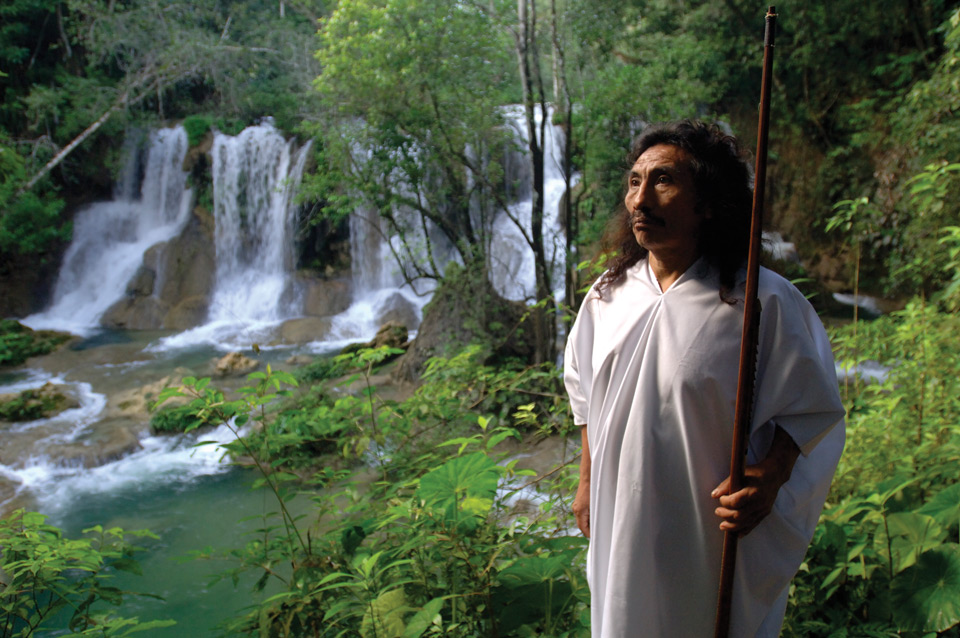
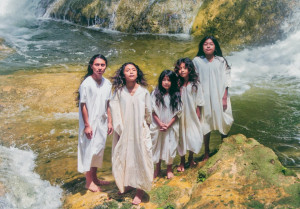
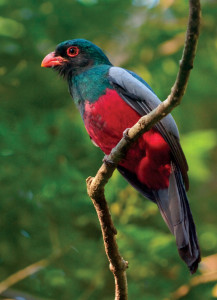
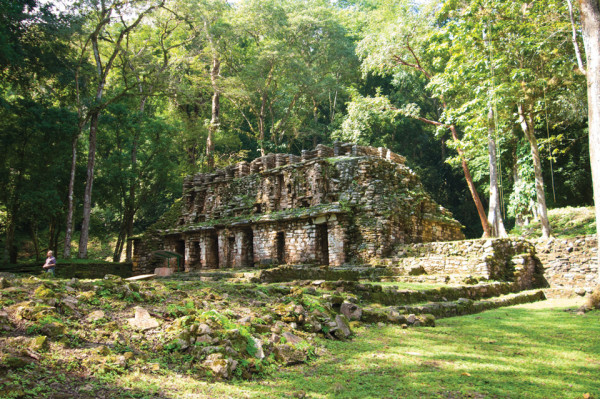
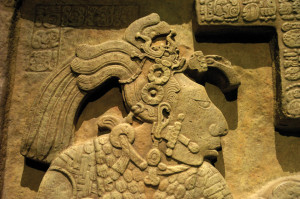
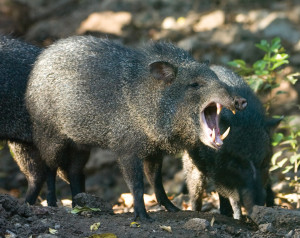
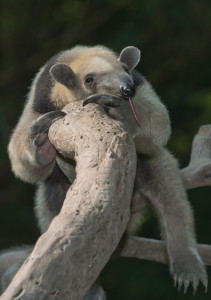
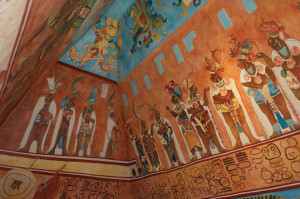
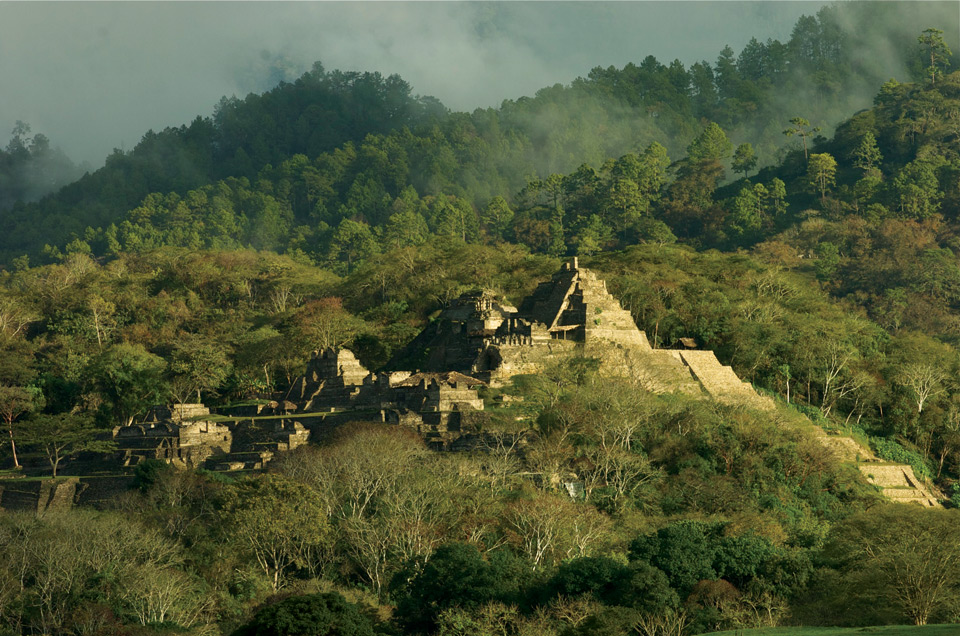
Interesting article on the Lacandon jungle, it is worth mentioning that the images are very impressive and the importance of nature and biodiversity is unequaled, thanks for your work, apparently the Lacandon jungle of Chiapas. A beautiful state of the Mexican republic that is destined for adventure tourism.
I am going to review your site to find information on the Maya Mayan zones that are in Guatemala and Mexico. He sent him a fraternal greeting from Chiapas.